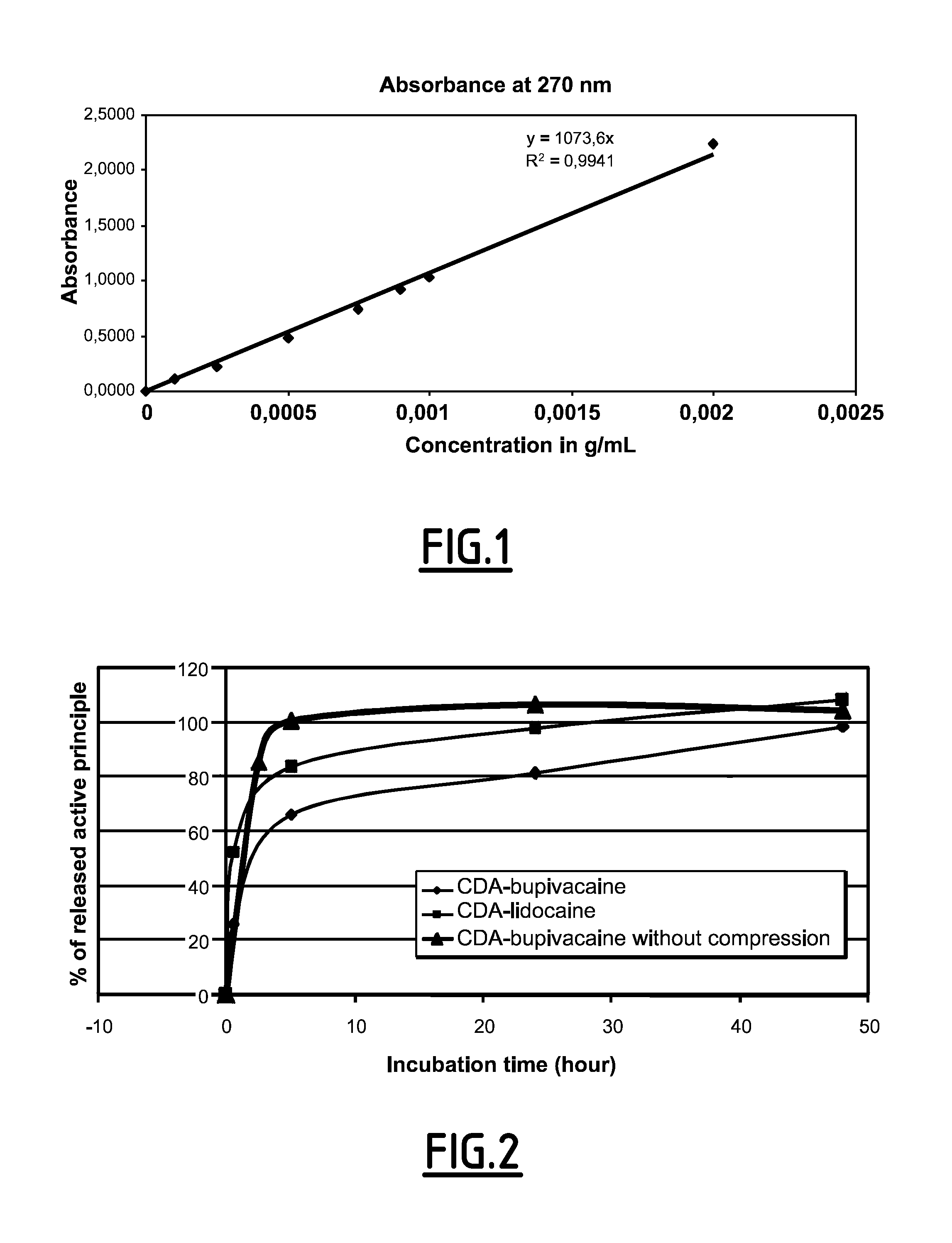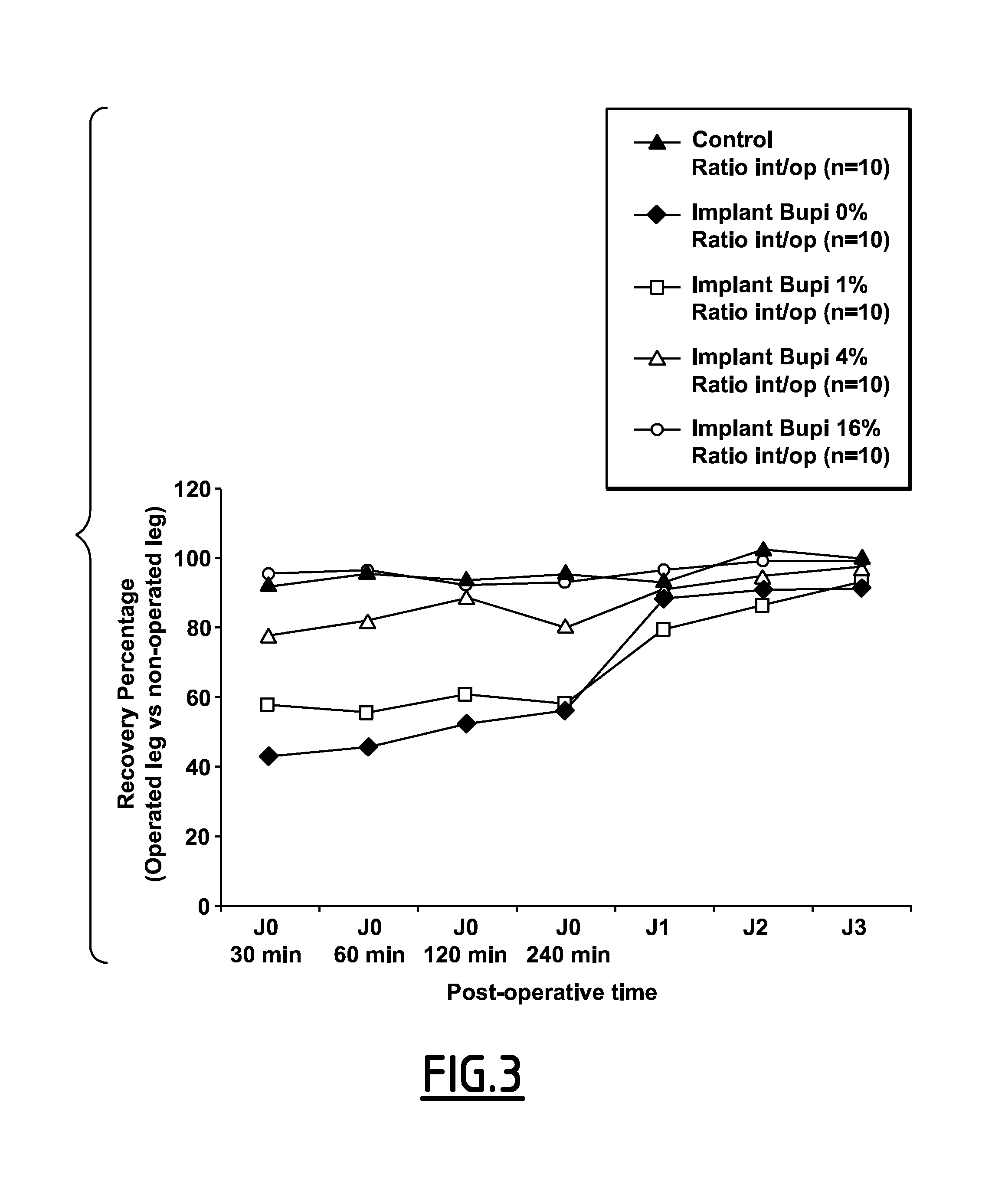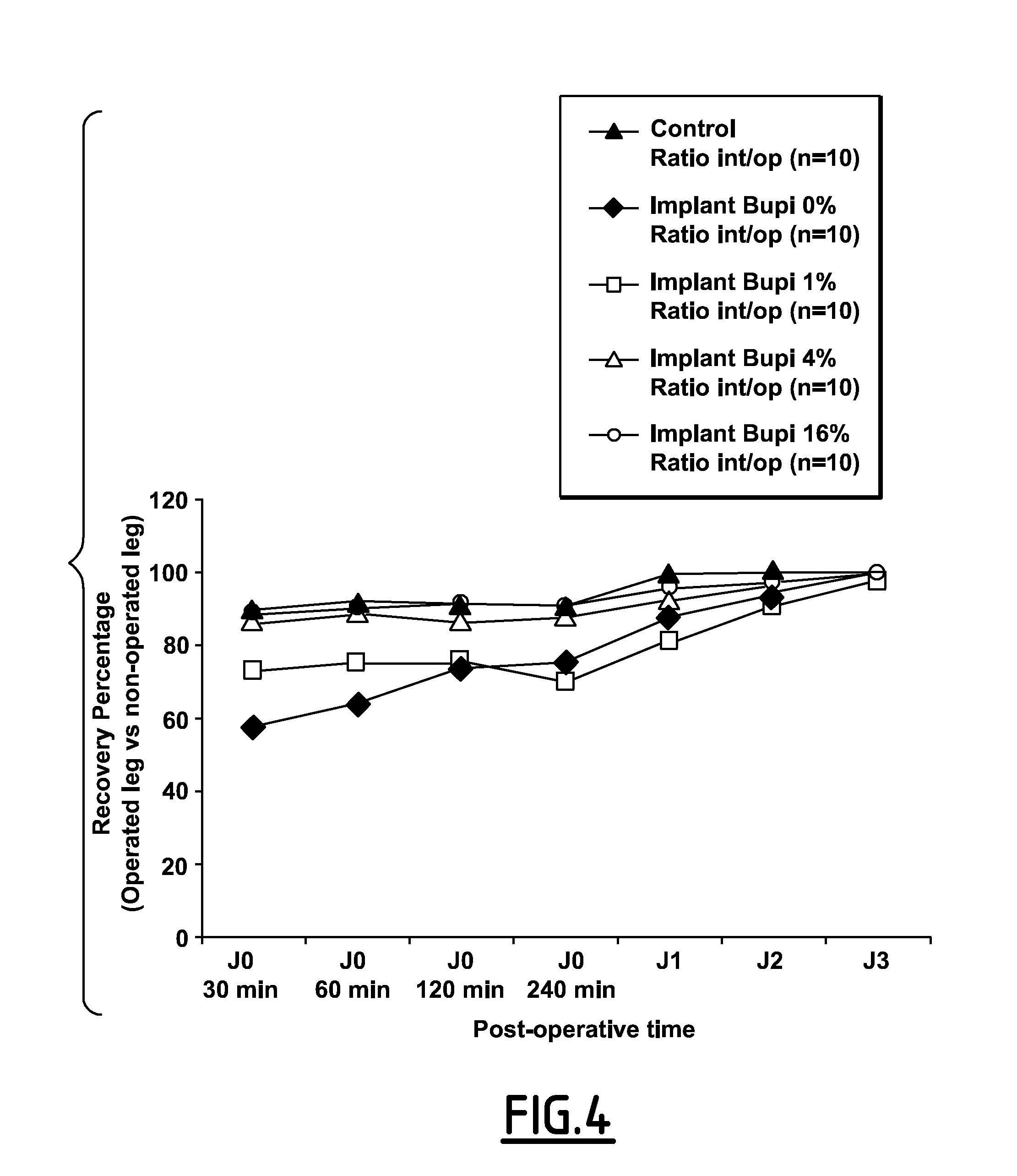Analgesic Apatitic Calcium-Phosphate Cement
a technology of apatitic calcium-phosphate cement and analgesic, which is applied in the direction of impression caps, inorganic non-active ingredients, applications, etc., can solve the problems of entrain side effects, patients may not be eligible for such a treatment, and the pain of orthopaedic operations is often associated with strong pain, so as to reduce the risk of side effects and relieve pain
- Summary
- Abstract
- Description
- Claims
- Application Information
AI Technical Summary
Benefits of technology
Problems solved by technology
Method used
Image
Examples
example 1
CDA-Bupivacaine And CDA-Lidocaine Association
[0157]One dose of lidocaine was assayed: 5% w / w.
[0158]Three doses of bupivacaine were assayed: 1%, 4% and 16% w / w, i.e. 0.25 mg, 1 mg and 4 mg of bupivacaine for an implant of 25 mg.
[0159]The active principle bupivacaine was first diluted in ethanol and the appropriate amount of active principle is added to the CDA powder (synthesized according to reference 12, particle size 40-80 μm). The mixture was then mixed at room temperature during one hour at a speed of 50 rpm using a Rotator drive STR4 from Stuart Scientific. After mixing, the ethanol was removed by lyophilisation using appropriate equipment (Christ alpha1-4 from Bioblock Scientific).
[0160]The powder thus obtained was compressed on a cold isostatic press (FF558 from NovaSwiss) by isostatic compression of 140 MPa during 5 minutes. This product is called “CDA-bupivacaine without compression”.
[0161]Part of the blocks obtained were subsequently crushed in a mortar made of alumina to ...
example 2
Assay Methods
[0162]First, a method for assaying the bupivacaine release was developed. The released bupivacaine is assayed by UV spectrophotometry. Several wavelengths were tested. At short wavelengths (200 nm), the assay is more sensible (about 1 μg / mL) but the result may be affected by the presence of phosphate ions released by the CDA. On the contrary, at long wavelengths (262-270 nm), the phosphate ions absorbance does not interfere with the bupivacaine absorbance. Consequently, bupivacaine was thus assayed at 270 nm (see FIG. 1).
[0163]The same method was applied to determine the lidocaine release. A first assay confirmed that the bupivacaine within the composition is stable for 3 months at 4° C.
Release Kinetics
[0164]200 mg of CDA powder as prepared in Example 1 were introduced in distilled water (15 mL) at 37° C. while mixing. After an incubation time of 30 min, 2 h30, 5 h, 24 h, 48 h, 5 days, 2 mL liquid were removed, filtered and assayed by UV spec...
example 3
Post-Operative Analgesic Effect of CDA-Bupivacain Knee Implant In Rat
Animals
[0166]50 Wistar male rats weighing between 250 and 275 g on their arrival to the animal facilities were used. After handling in order to get accustomed to the investigator presence, animals were placed by group of two into polycarbonate transparent F1 type cages with dust free wood shavings bedding (Safe) and free access to water and food, in the animal room with controlled temperature (21° C.±1° C.), hygrometry (45%±10%) and light / dark cycle (light 7 h to 19 h).
[0167]After a 5 days adjustment period, surgery was performed. Each animal was tagged with an identification number on the tail. Surgery was performed at the animal facilities operating bloc of the medical school of Nimes, France.
Reference Substance For the Model
[0168]The CDA-bupivacaine powder obtained in Example 1 is used to fill a cylindrical rat knee defect with 3 mm in diameter and 5 mm in length. The powder was dropped directly inside the defec...
PUM
| Property | Measurement | Unit |
|---|---|---|
| specific BET area | aaaaa | aaaaa |
| mean particle size | aaaaa | aaaaa |
| mean particle size | aaaaa | aaaaa |
Abstract
Description
Claims
Application Information
 Login to View More
Login to View More - R&D
- Intellectual Property
- Life Sciences
- Materials
- Tech Scout
- Unparalleled Data Quality
- Higher Quality Content
- 60% Fewer Hallucinations
Browse by: Latest US Patents, China's latest patents, Technical Efficacy Thesaurus, Application Domain, Technology Topic, Popular Technical Reports.
© 2025 PatSnap. All rights reserved.Legal|Privacy policy|Modern Slavery Act Transparency Statement|Sitemap|About US| Contact US: help@patsnap.com



